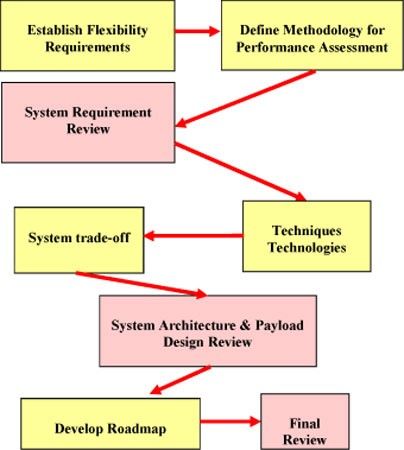PAGE CONTENTS
Objectives
This study investigates a wide range of techniques and technologies for Ka band (and possibly Q/V bands) for providing higher capacity, more flexible next generation satellite broadband systems. It also develops the methodology for the fair comparison of different systems. Finally the study recommends a technology development roadmap for possible future development.
The main objectives are:
- To capture capacity & flexibility requirements for European systems,
- To consider spectrum (regulatory) issues taking into account both Ka band and Q/V bands,
- To develop a set of scenarios for development,
- To develop a methodology to facilitate the fair comparison of different systems including overall capacity, cost, payload power etc.,
- To provide a review of techniques and technologies that may provide improvements,
- To develop architectures for high capacity and high flexibility at system and payload level,
- To develop the corresponding payload and system architectures,
- To develop a technology roadmap to provide ESA with a plan that will ensure the timely development of the selected new technology.
Challenges
The fundamental issue was to determine the best technology (or technologies) for providing high speed broadband by geostationary satellite.
The study considered the potential value of Q/V band usage to provide more spectrum.
The study developed its own assessment methodology for the comparison of candidate scenarios
Plan
The figure below shows the logic of the study and the sequence of the tasks:

Current Status
The project has now been completed and the deliverable documents finalized. The study is expected to present at the 2013 ARTES 1 days in December.



